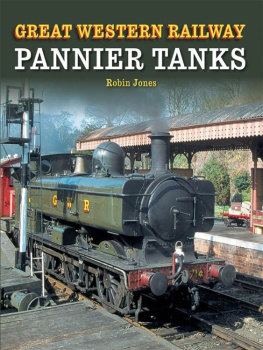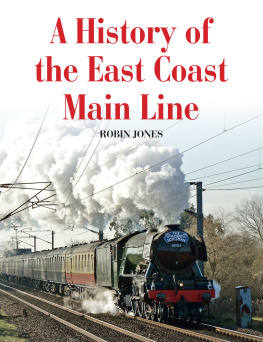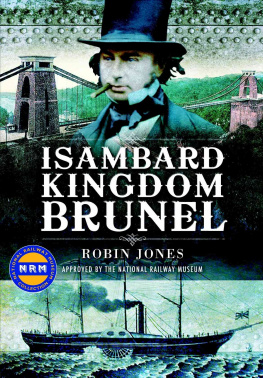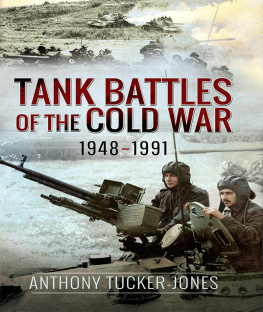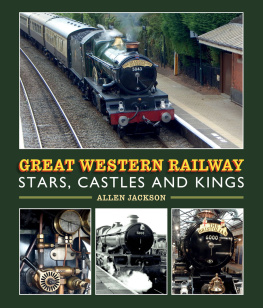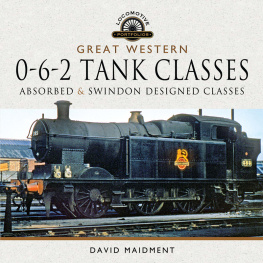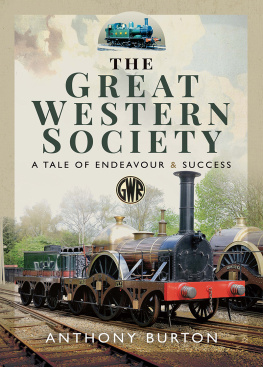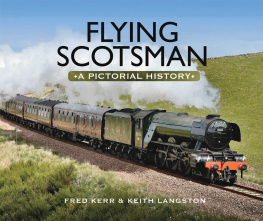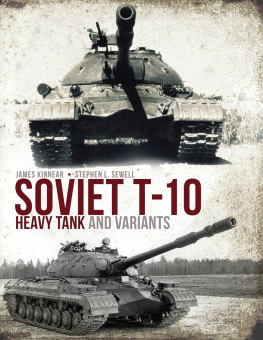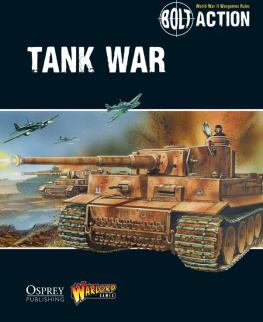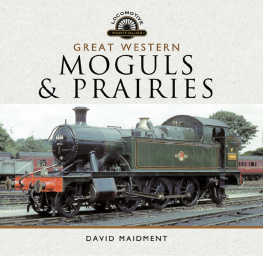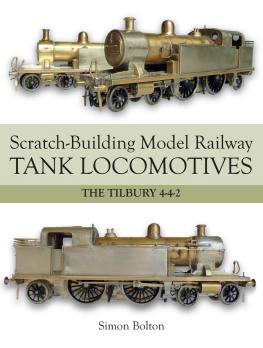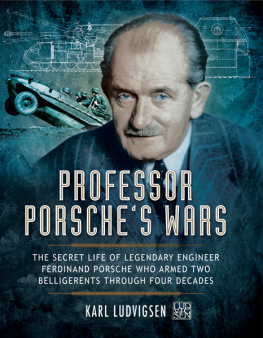GREAT WESTERN RAILWAY
PANNIER TANKS
GREAT WESTERN RAILWAY
PANNIER TANKS
Robin Jones

First published in 2014 by
The Crowood Press Ltd
Ramsbury, Marlborough
Wiltshire SN8 2HR
www.crowood.com
This e-book first published in 2014
Robin Jones 2014
All rights reserved. No part of this publication may be
reproduced or transmitted in any form or by any means,
electronic or mechanical, including photocopy, recording,
or any information storage and retrieval system, without
permission in writing from the publishers.
British Library Cataloguing-in-Publication Data
A catalogue record for this book is available from the British
Library.
ISBN 978 1 84797 654 3
Dedication
To Jenny, Vicky and Ross
Photographic Acknowledgements
Those who provided pictures for this book are credited with
the captions; pictures by Ben Brooksbank, Hugh Llewellyn,
Ben Salter, 8474Tim, Chris Howells, Tony Hisgett and Peter
Broster are published under a Creative Commons licence.
Full details may be obtained at:
http://creativecommons.org/licences.
Frontispiece: GWR 57XX No. 9600 takes pride of place
on the turntable during an open day at Tyseley Locomotive
Works, with fellow Collett-designed 4-6-0s No. 4936 Kinlet
Hall and Castle No. 5029 Nunney Castle in the background.
ROBIN JONES
CONTENTS
INTRODUCTION
From the outset, the Great Western Railway set out not only to be better than the rest, but very different, too. Its unique independence-with-attitude approach all began when its first engineer, Isambard Kingdom Brunel, ripped up the rule book, started all over again with a very wide blank sheet of paper, and insisted that the railway was built to his unique broad gauge, with the rails 7ft 0in (2.14m) apart.
When asked to design the railway that would connect London to Bristol, condensing a journey that took several days by stagecoach into one of a few hours, Brunel aimed to do much more. Brunel, appointed by the GWR when he was just twenty-seven years old, demanded the right to build a luxury people carrier, one which would be the pride of all Britain, and a marked improvement on the countrys early passenger-carrying railways. He had seen for himself the Liverpool & Manchester Railway, the worlds first inter-city line, which became an overnight sensation when it opened on 15 September 1830, but had been less than impressed.
That railway had been built to engineer George Stephensons track gauge of 4ft 8in (1.44m), which had been based on measurements of the axles of coal carts in north-east England. However, the critical Brunel found that the lines four-wheel coaches gave an uncomfortable ride, and aware that GWR passengers would include the well-to-do travelling to the Regency spa resort of Bath, never mind those who journeyed on across the Atlantic to New York by means of his globe-shrinking steamships from Bristol, would demand something more luxurious.
He responded to the challenge by designing his own gauge for the GWR, one that would see bigger locomotives with wheels placed outside their frames, permitting much larger boilers to be used and thereby creating a greater capacity for speed. The wider gauge would allow larger wheel diameters, lessening the effect of friction while facilitating the ability to build wide carriages with bodies mounted as low as possible, minimizing air resistance never mind the fact that most of the rest of Britain and then the world was building to Stephensons gauge, which eventually became known as standard gauge, and the fact that trains on one system could not physically run on to another. Brunel asked Lord Shaftesbury, who drafted the successful Great Western Railway Bill of 1835, to omit any clause stipulating what gauge could be used, so he could be given a free hand.
So where did Brunel get his 7ft 0in (2.14m) gauge from? The measurement just so happened to be identical to that used on a short rope-worked railway at Chatham Docks that his father Marc had laid several years before.
As Britains railway network grew in the decades that followed, so did the controversy over its gauge. The GWR repeatedly showed that broad gauge was faster and carried bigger payloads, but could not avoid the fact that it was left as a minor player in a country seeking a one-size-fits-all national network. Broad gauge finally died over the weekend of 2123 May 1892, when an army of more than 4,200 platelayers and gangers converted all 177 miles (285km) of the main line between Paddington and Penzance from broad to standard gauge.
Despite the slow and protracted demise of the still arguably superior broad gauge, the GWR continued steadfastly to do its own thing when it felt it knew better than others. Although it did not invent the steam railmotor concept, in which a locomotive and carriage are built as a single self-contained unit, in Edwardian times the GWR became the first to build a fleet of them, having a total of ninety-nine in service by 1908.

GWR 57XX No. 5764 picks up speed at Eardington on the Severn Valley Railway on 25 September 2009. RAY OHARA
Similarly, in 1933 the GWR introduced the first of what was to become a very successful series of diesel railcars, building up a fleet of thirty-eight between then and 1942, at a time when other British railways had been dithering over whether to introduce the concept into a world in which steam still reigned supreme despite other options becoming available. In this the GWR was certainly proved right.
The Paddington-Swindon empire was renowned for its fierce spirit of independence, which was by no means quashed when Britains railways were nationalized on 1 January 1948. The GWR became the Western Region, but in many ways continued in its own individual direction, as if nationalization were little more than a name change.
After the years of wartime austerity diminished and money became available to modernize the countrys network, diesel and electric traction were seen as the future indeed, Britain was lagging behind many other Western countries in this respect. British Railways 1955 Modernization Plan finally called for the rapid eradication of steam, which up until then had been the preferred choice: at that time, only five diesel locomotives were running on the British main line, all of them diesel-electric types. But after the Modernization Plan was published, several locomotive manufacturers were encouraged to build diesels, and most of the types that were eventually adopted for mass production were diesel electrics.
But the Western Region yet again insisted on being different and chose diesel-hydraulic types, based on the introduction of V200 locomotives by the German Federal Railways in 1953. Diesel-hydraulic locomotives were lighter than diesel-electric equivalents, and had a better power/weight ratio, leading to decreased track wear. Yet even the best hydraulic transmissions were capable of handling engines with a power output only of around 1500hp, and more powerful locomotives would need a pair of engines and transmissions.

Replica GWR broad-gauge 2-2-2 Fire Fly on the broad-gauge demonstration line at Didcot Railway Centre. Brunels broad gauge is the most famous example of the GWR ploughing its own furrow rather than following the rest, and its widespread and trademark adoption of the pannier tank design may be viewed as another. FRANK DUMBLETON

